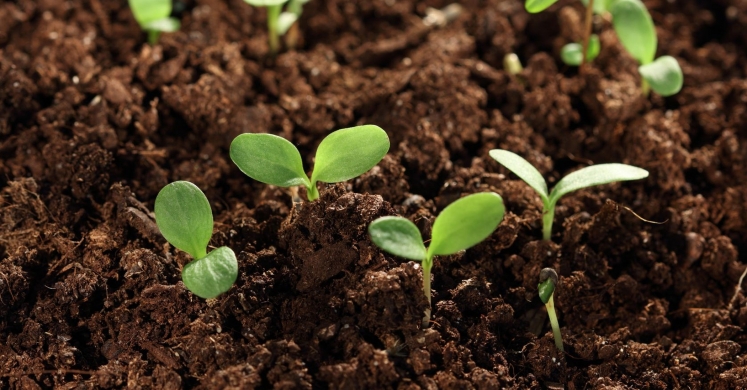Blog

Greener Gardening: Modifying pH Levels in Soil
Greener Gardening is a new blog series designed to help you make your garden, lawn and landscape more beautiful and sustainable by sharing the expert knowledge of Phipps professionals and educators.
Modifying pH levels in soil is the key to cultivating a healthy lawn and garden in an environmentally sustainable way.
“Most master gardeners are just learning this,” says Walter Jarosh, educator with Phipps' Sustainable Landcare program. “It makes so much sense and it’s so easy.” Since the 1990s, Jarosh has taught such popular Phipps’ classes as Soil Ecology, Organic Lawn Care, Tree and Shrub Maintenance, and Landscape for Life. He also is an independent tree service contractor in the suburbs south of Pittsburgh.
“What is probably the most import thing is the right pH range — the acidic level,” he says. Before planting, do some research, test the pH of the soil, and modify it to the preferred range of the specific plant you will be putting in.
“Plants like a wide range of acidity,” he explains, and a level that makes one plant thrive makes another languish.
“On your property there is a wide range of pH levels. The evergreen bed next to your house is going to be acidic. But grass should be more neutral (level 7). A pin oak among the grass likes to be a 4.5 to 5. So the pin oak is not going to do well unless you put a little acidic bed around it.”
Jarosh advises homeowners to go on the Internet and research the preferred pH level of the plants they want to grow.
“Everything varies,” he says. “The azalea likes an acidic 4.5 to 5. Potatoes like 4.5 to 5. Lettuce likes to be near 7.”
Once you know the preferred pH levels, Jarosh advises to test the soil’s acidity using a meter available at hardware and garden stores. When you know the current level, you can modify the soil with either lime or sulfur. Sulfur will increase the soil’s acidity, while lime will move acidic soil closer to neutral.
To cultivate and maintain a thick, green lawn without weed killer and fertilizer, use pH chemistry.
“Grass likes to be 6.3 to 7,” Jarosh says. At this neutral range, “your grass will be vigorous. If your pH drops to 5, the weeds will be a more aggressive, vigorous plant than the grass plants. The grass plant is going to struggle to survive. Weed killer is insufficient — the dandelions will keep coming back.”
“Sprinkle lime on your lawn if you have dandelions — but you have to test your soil first,” he says. Phipps’ sustainable landcare experts recommend using calcitic limestone or dolomitic limestone (wood ash) to raise pH. Granulated sulfur is recommended to decrease pH, but avoid using aluminum sulfate. It is recommended to keep children and pets off a newly treated lawn for 24 hours.
In addition to modifying pH, Jarosh advises people to add organic matter compost to the soil when planting. Pennsylvania soil is clay-heavy, which is good, he says. “Plants will grow really well in clay soil because it holds water better than sandy soil and there are lots of nutrients in clay.” But it’s hard to work with.
“If you mix organic matter compost with the soil it becomes easier to work with.” Plus, compost helps the roots to penetrate the soil and retain water.
And don’t forget to use mulch for moisture retention, and give plants plenty of water, especially during the hot months.
“Remember to water plants,” Jarosh says. “People forget to water plants. They’ll buy a $300 tree, and then in June and July they forget about them. Keep them watered. And be aware that any newly transplanted trees or shrubs need to be watered through the summer.”
For more help with your landcare needs, contact a Phipps-accredited Sustainable Landcare Professional.

